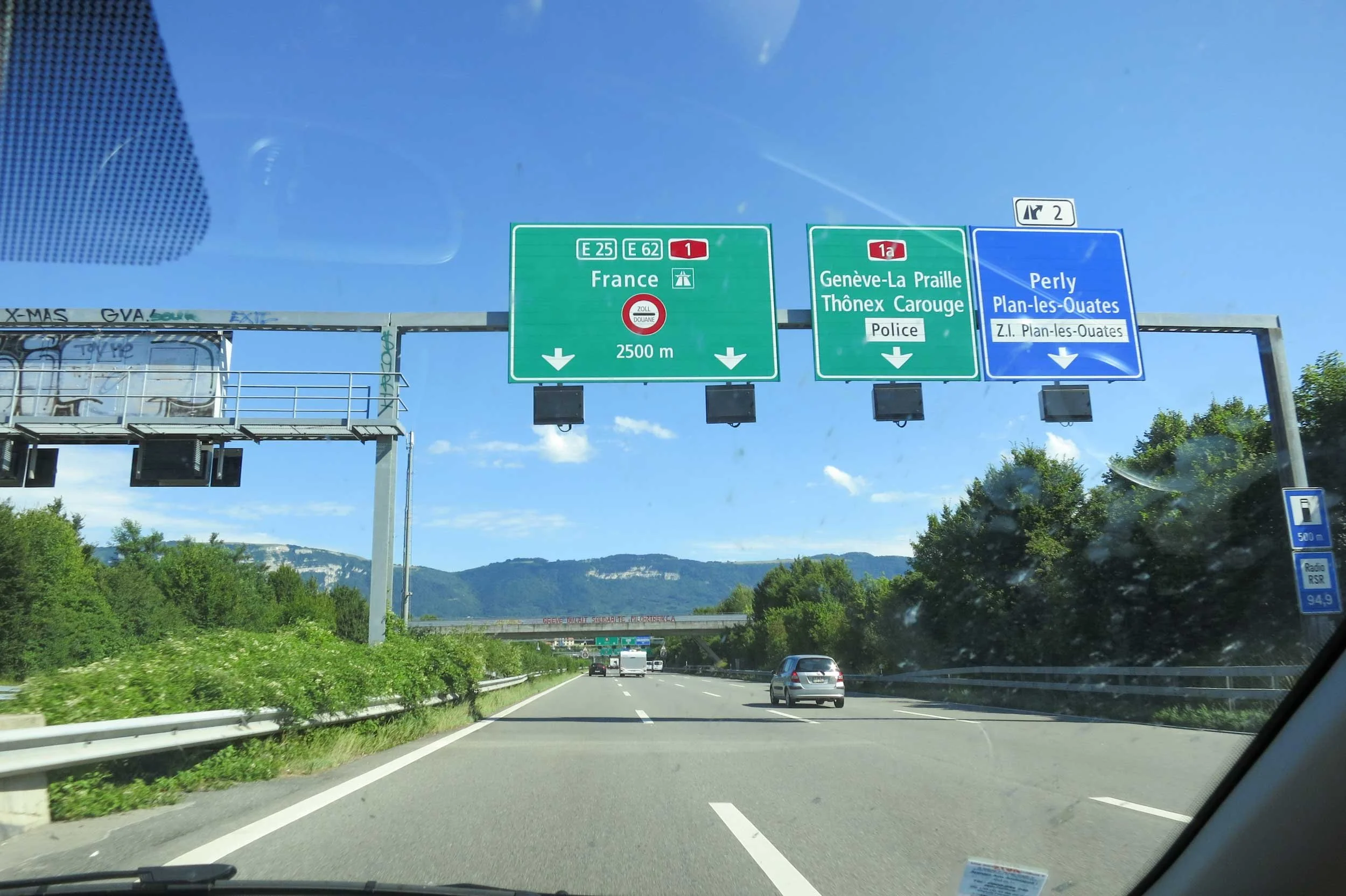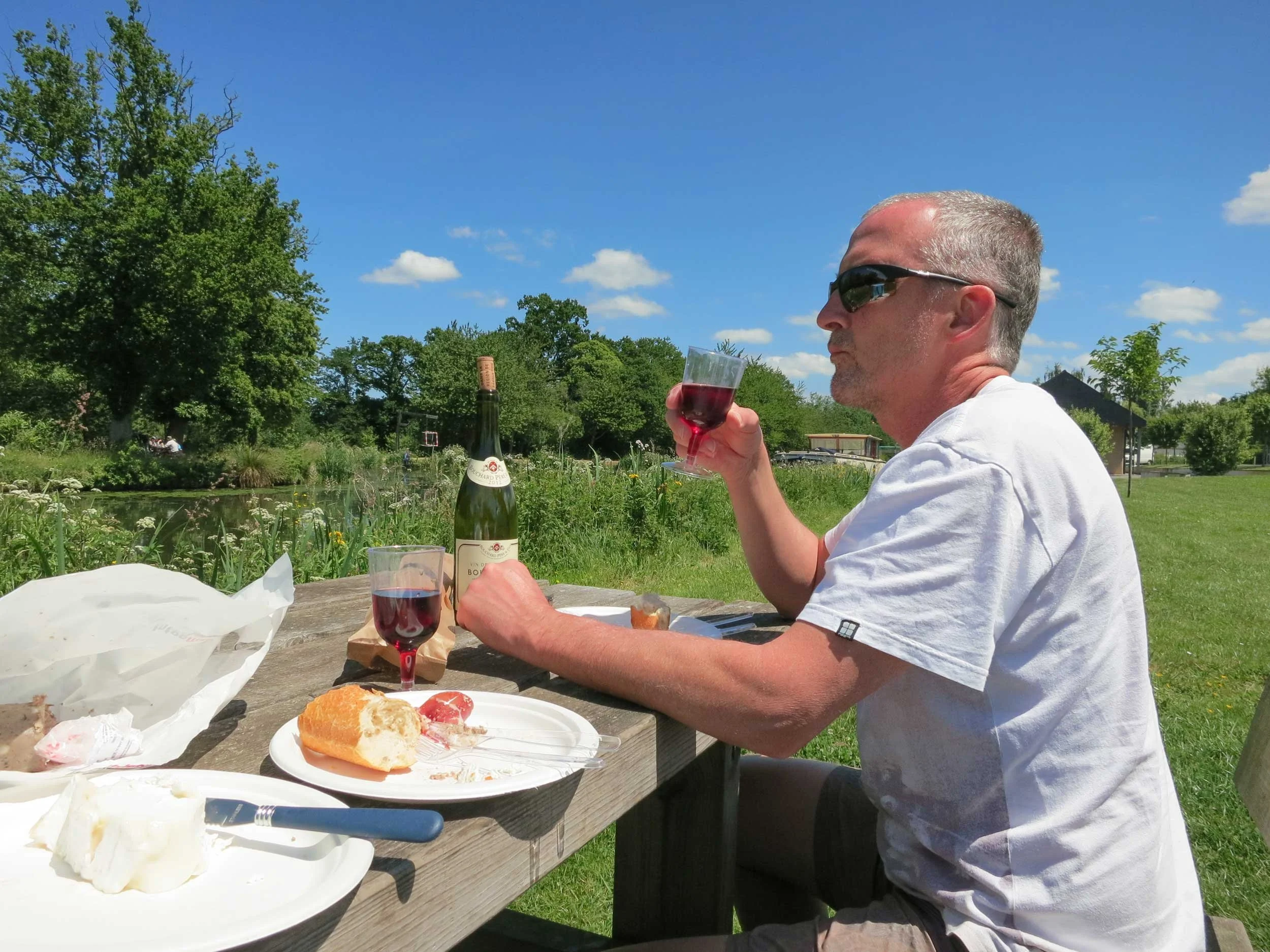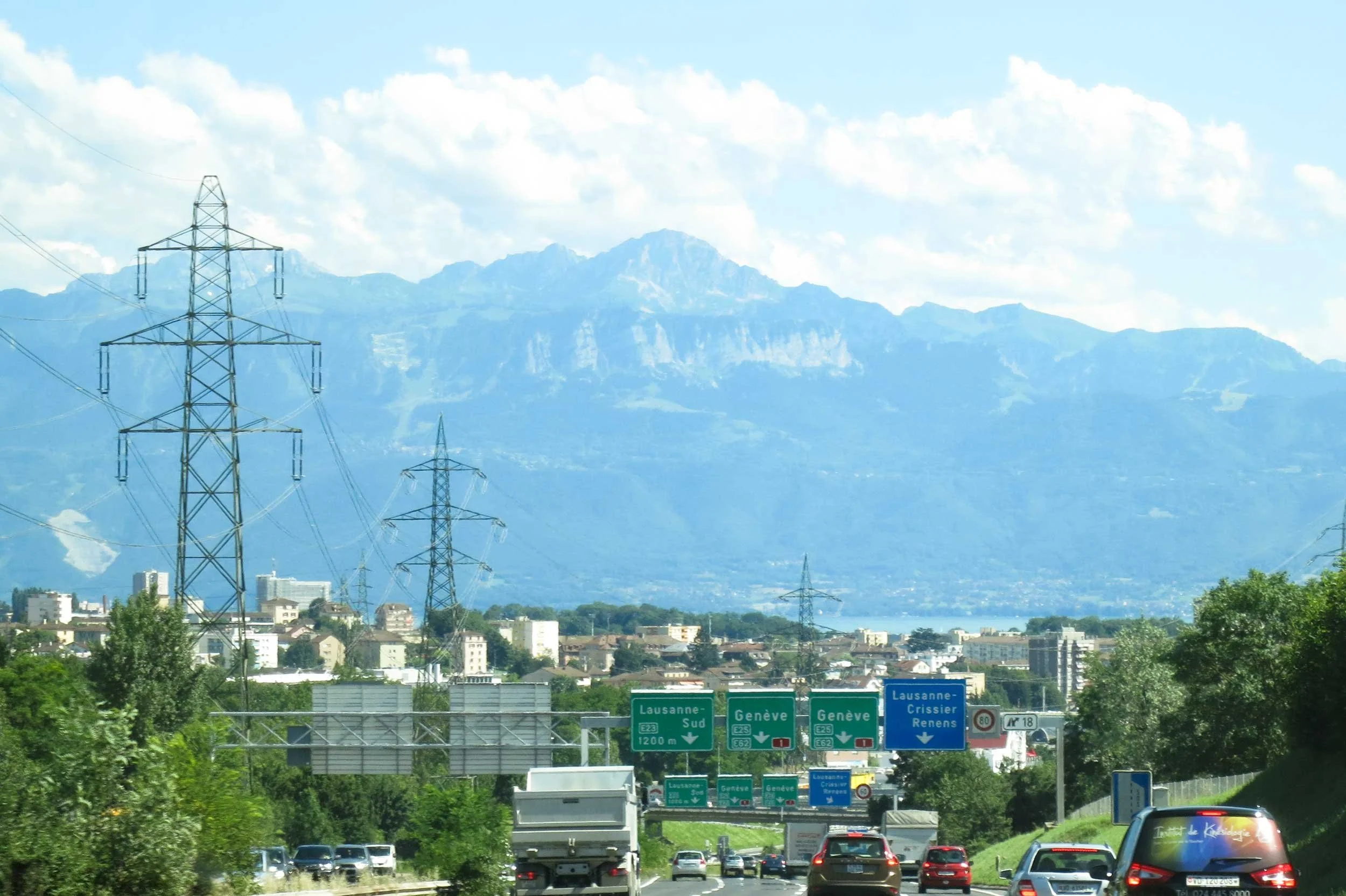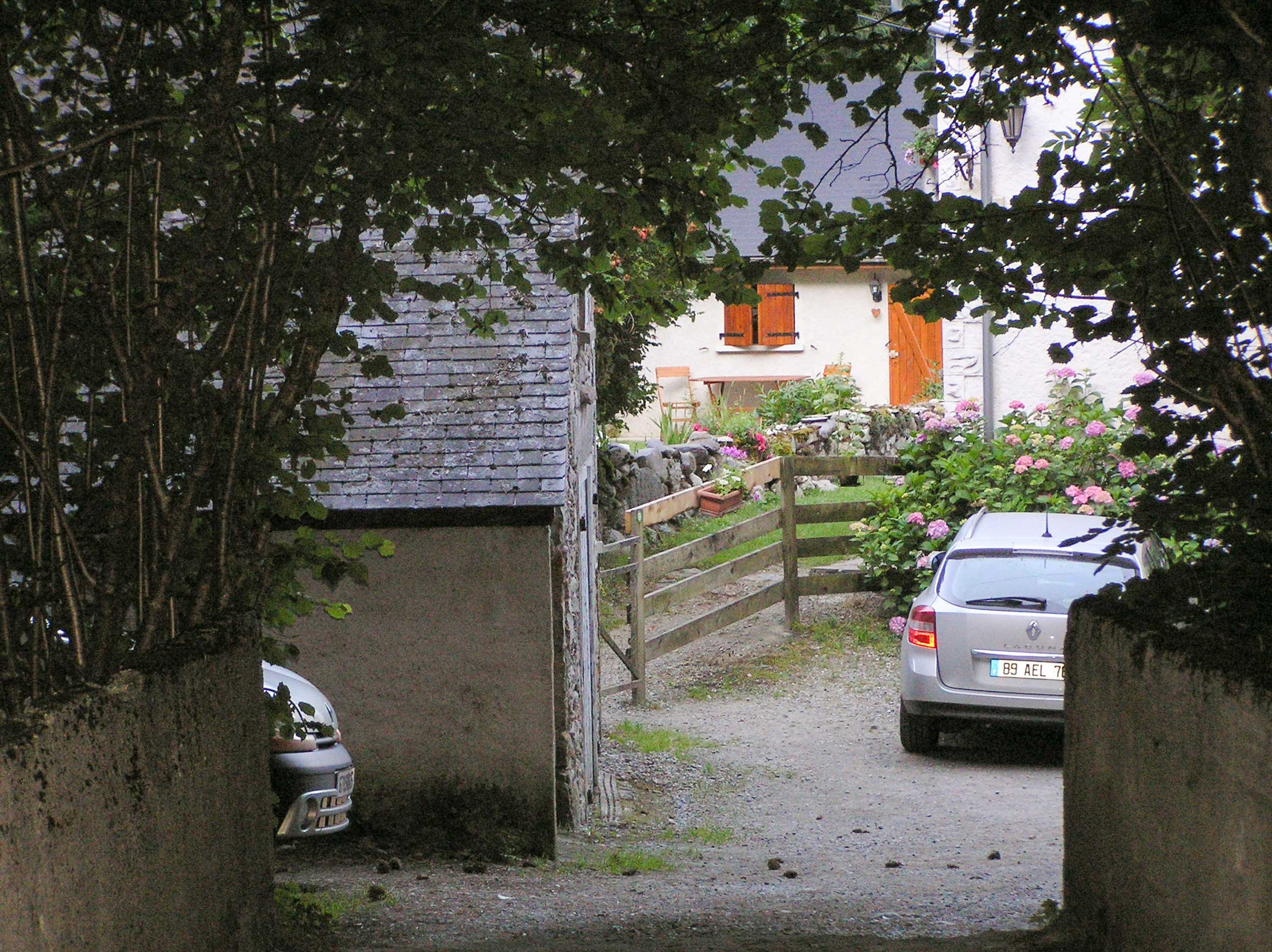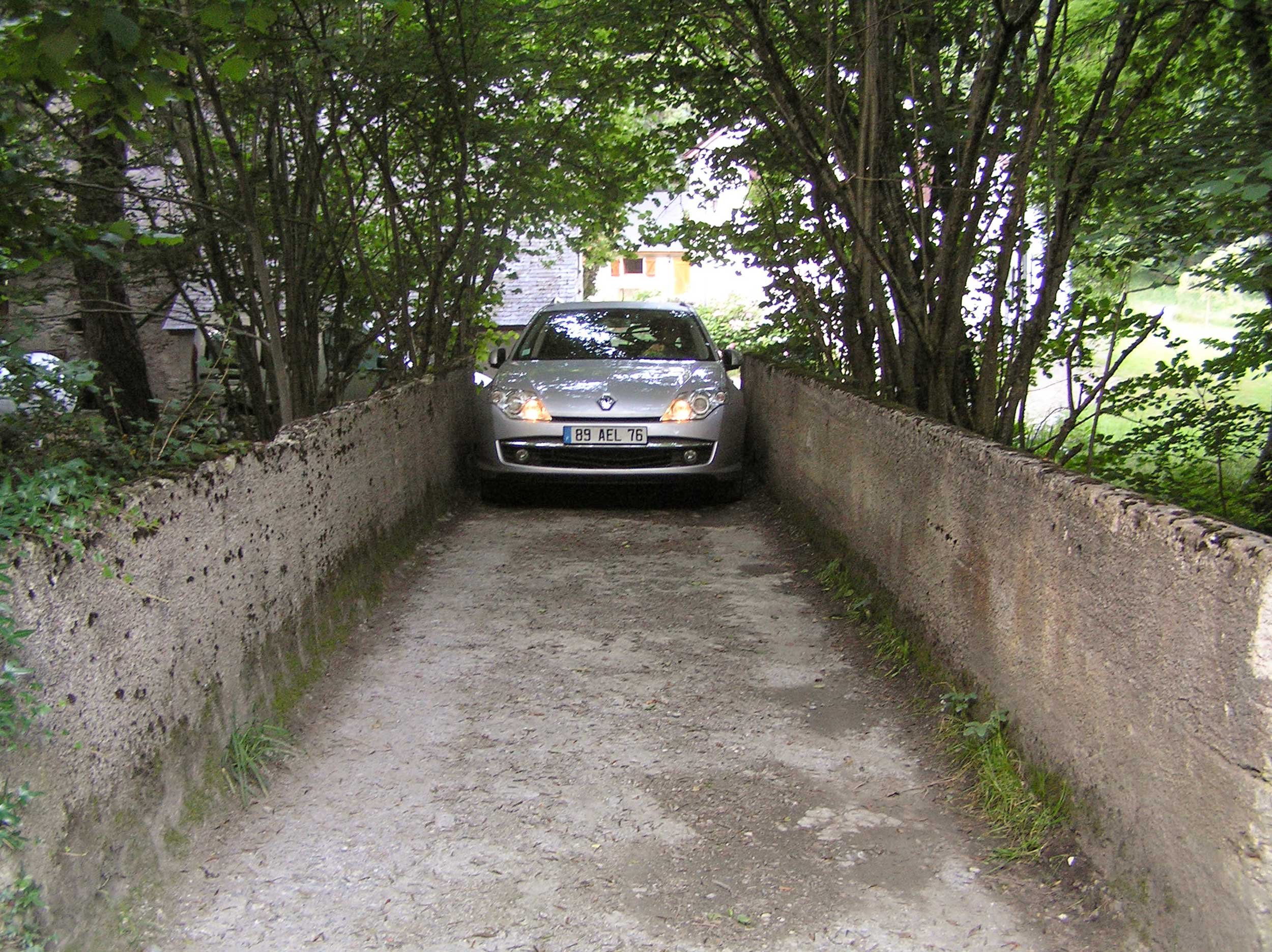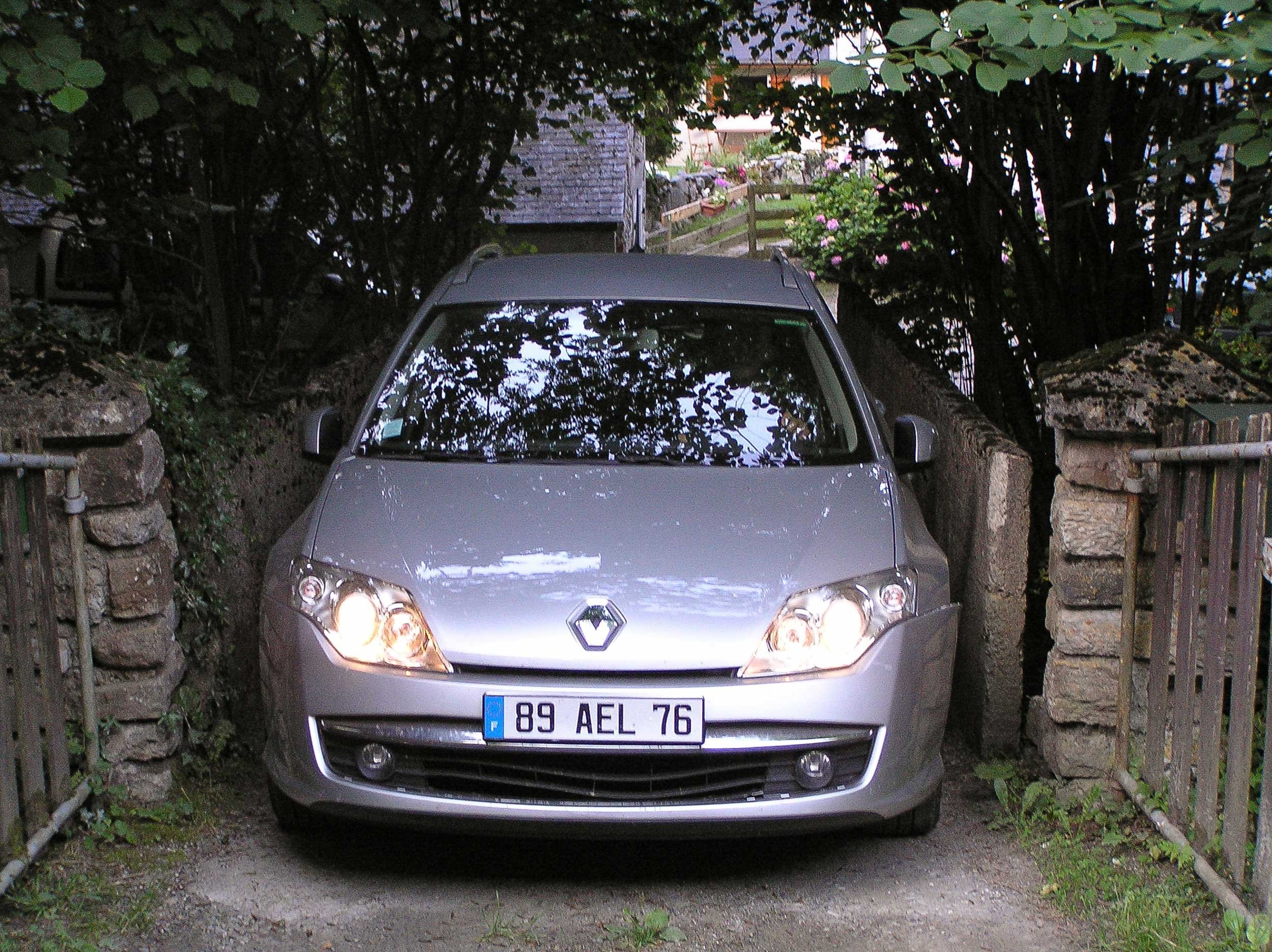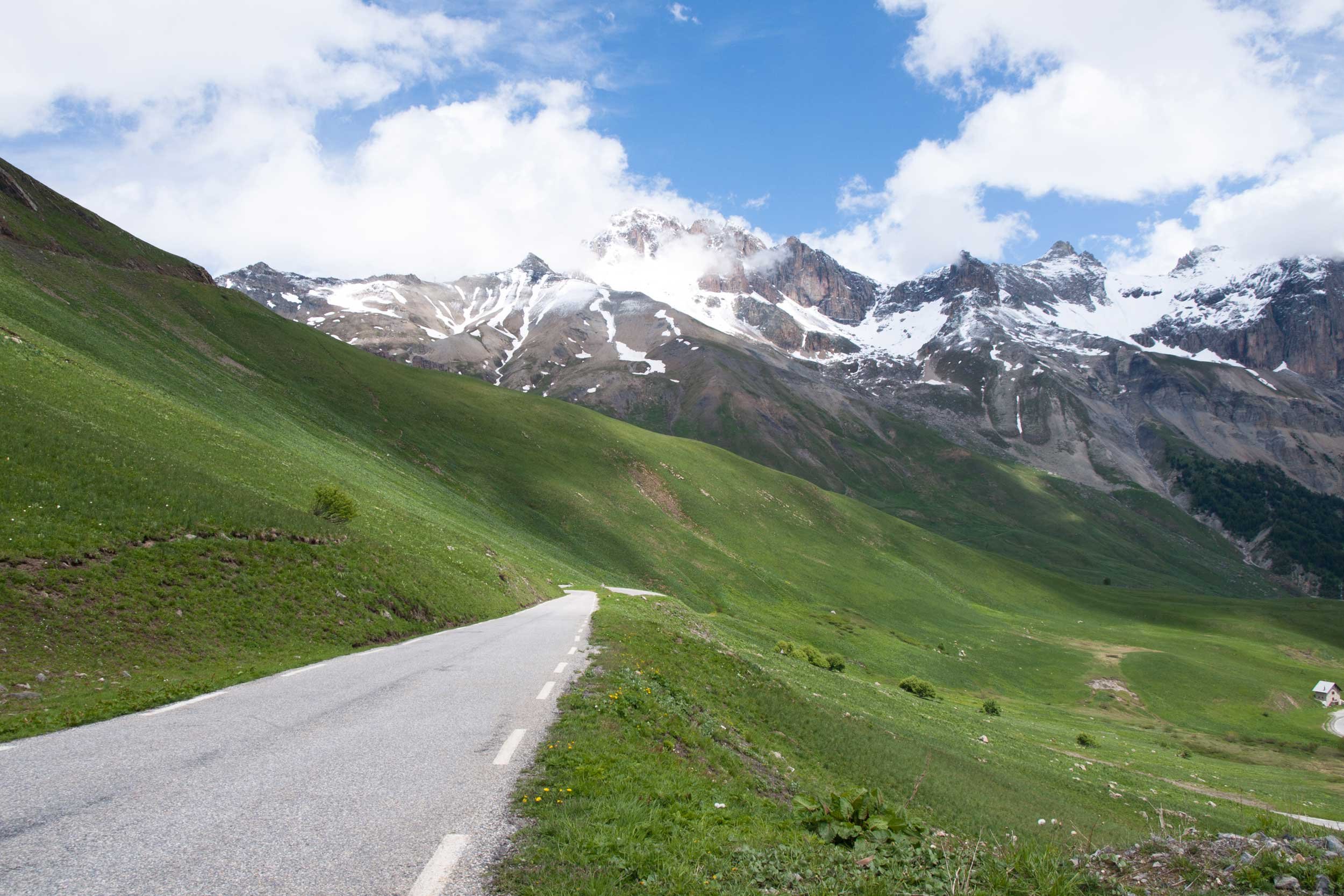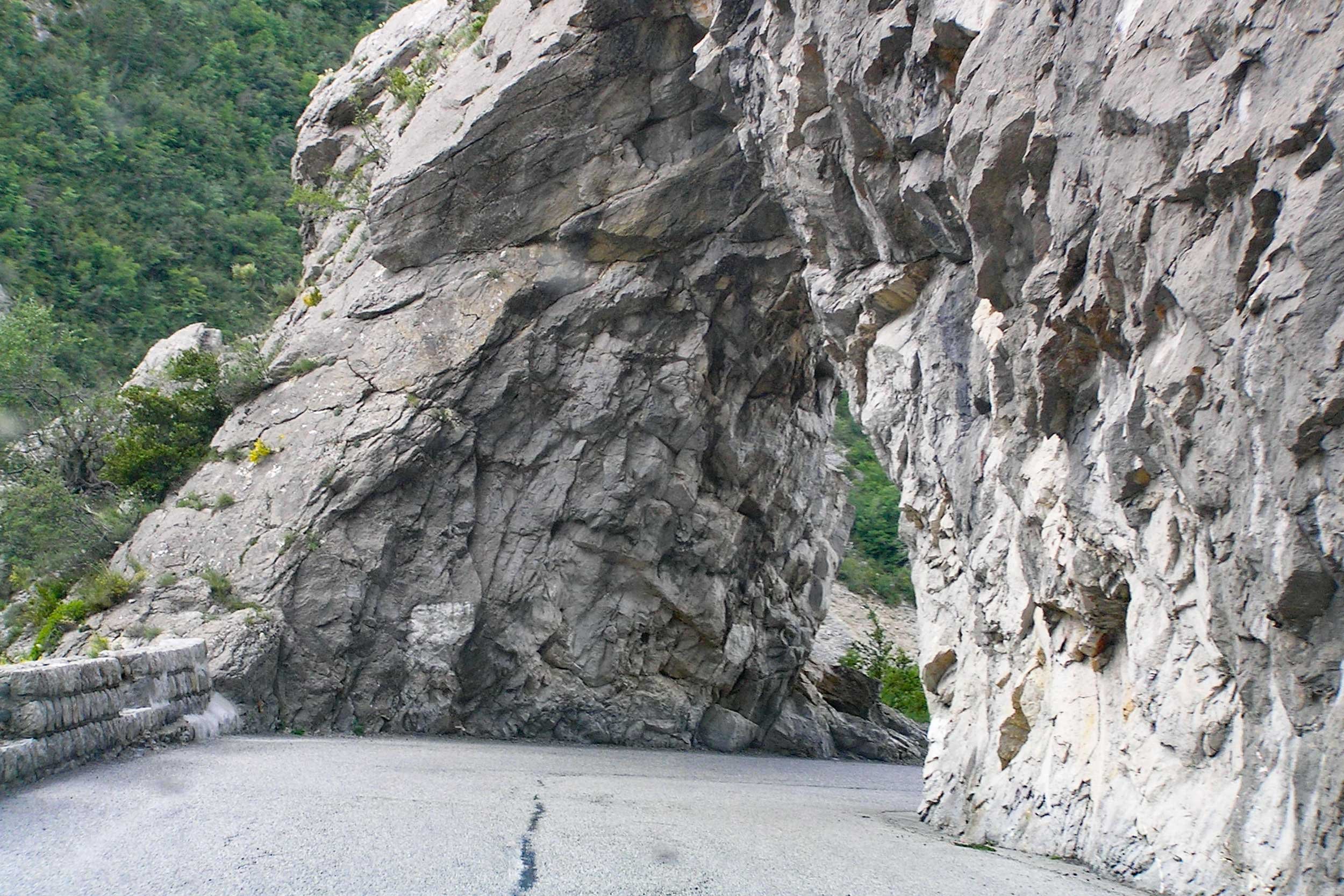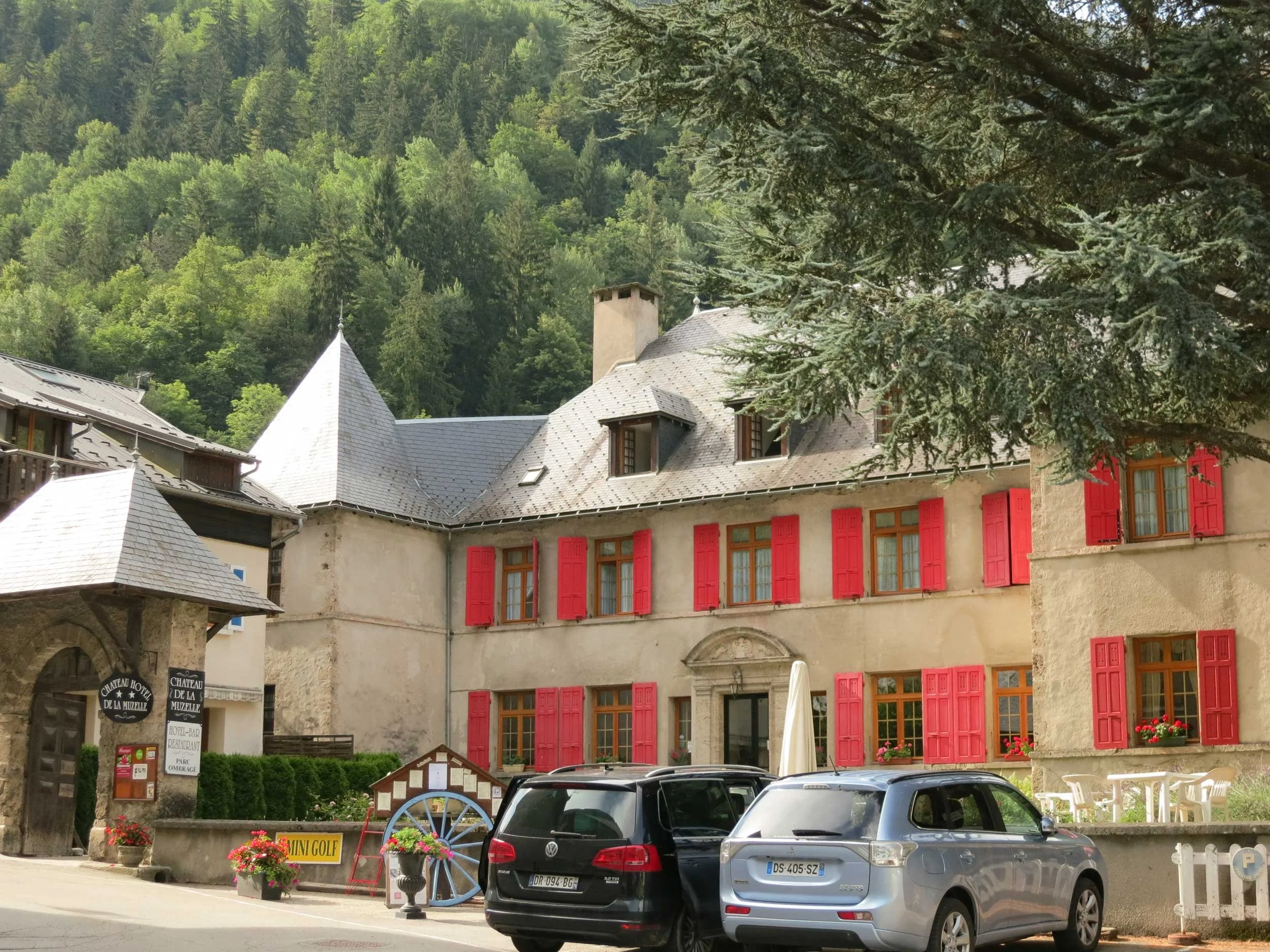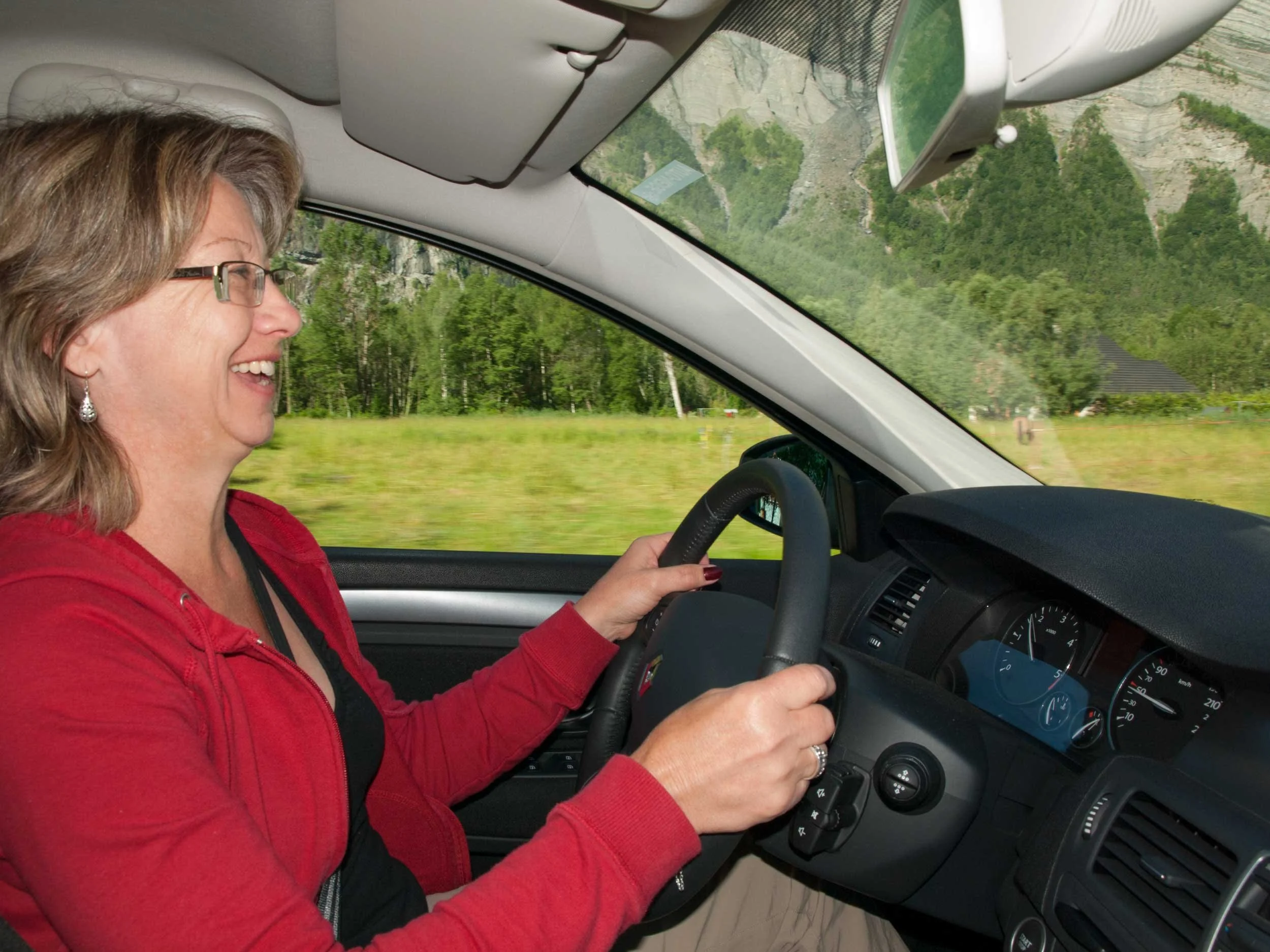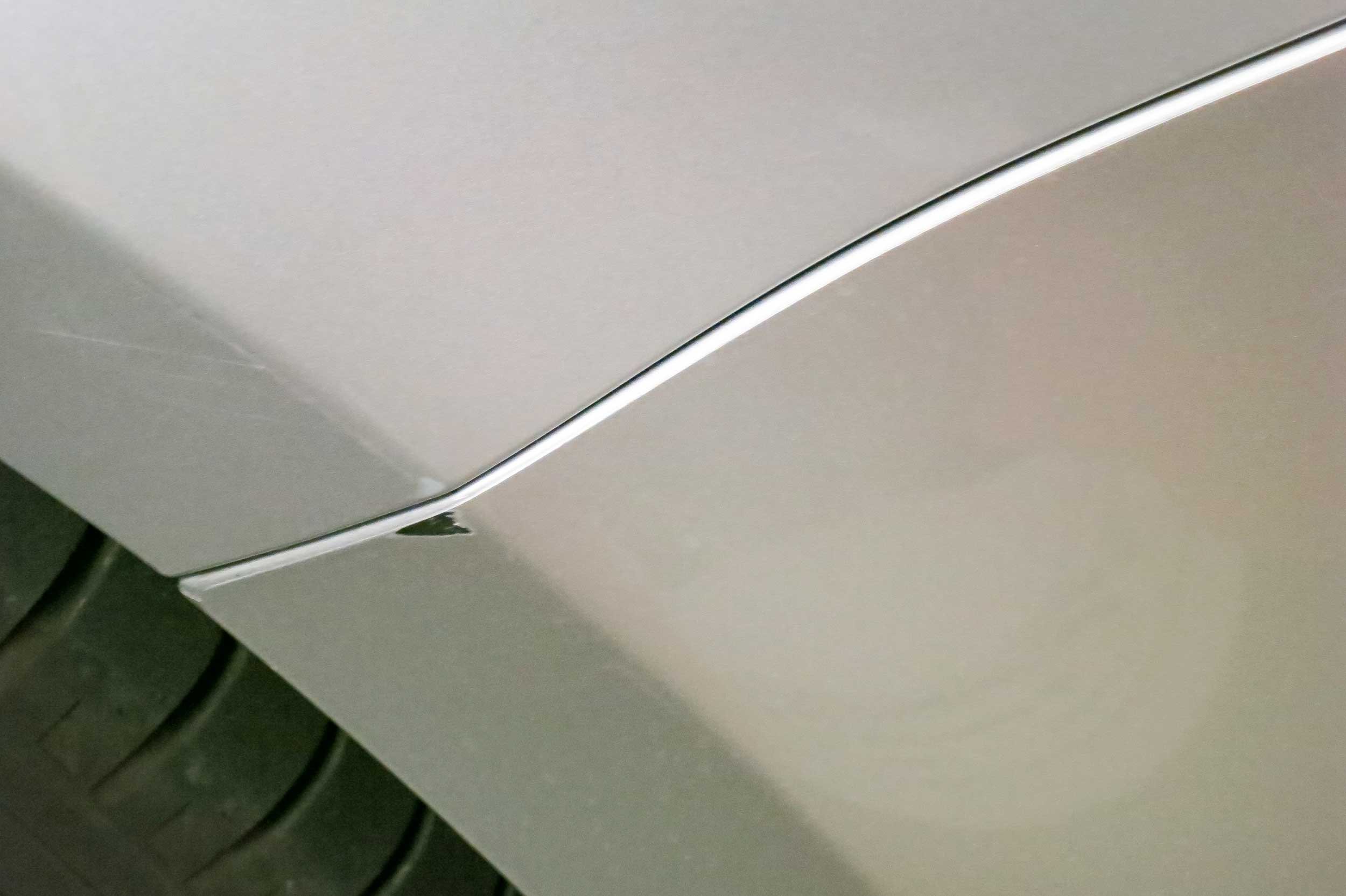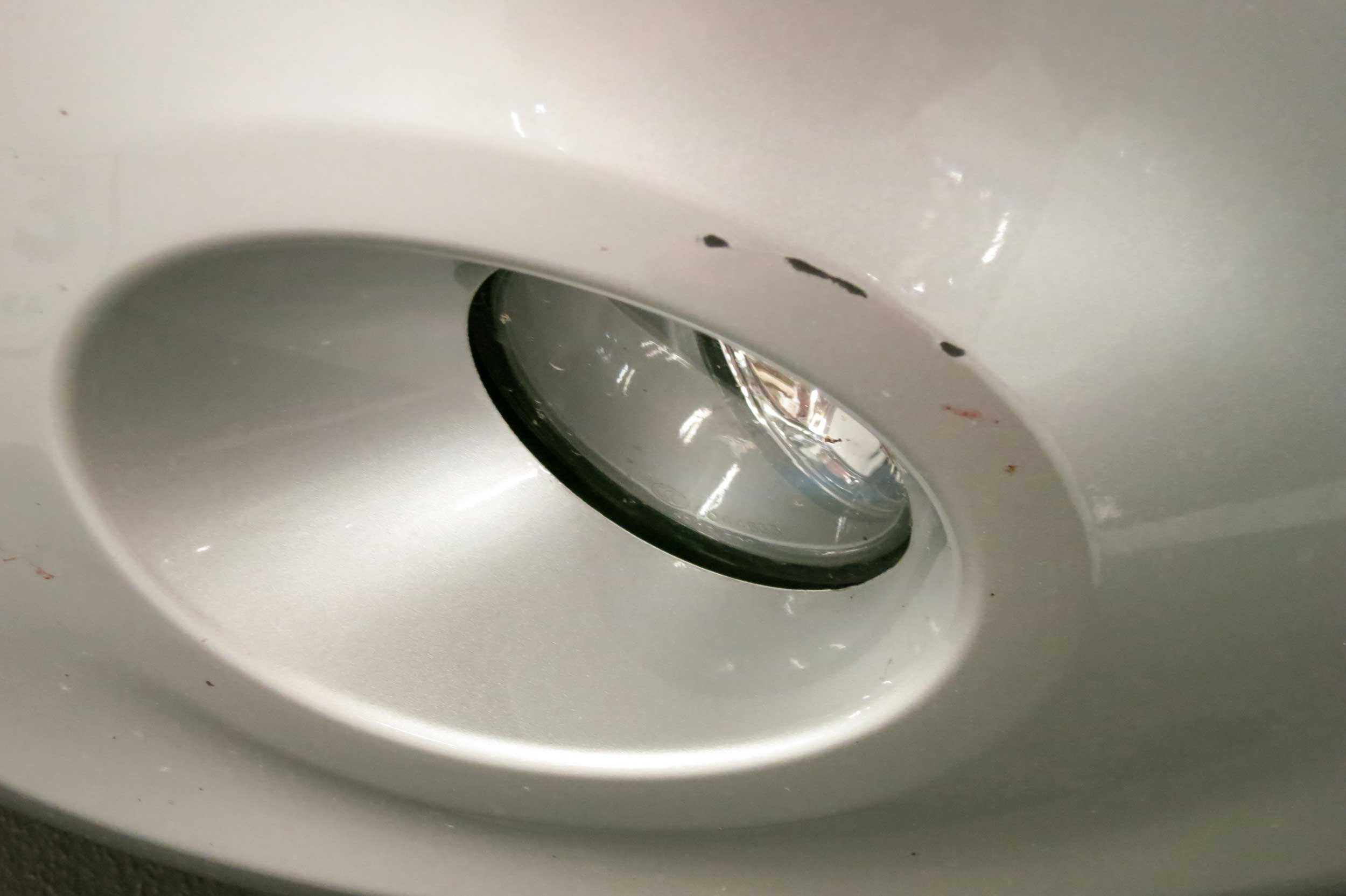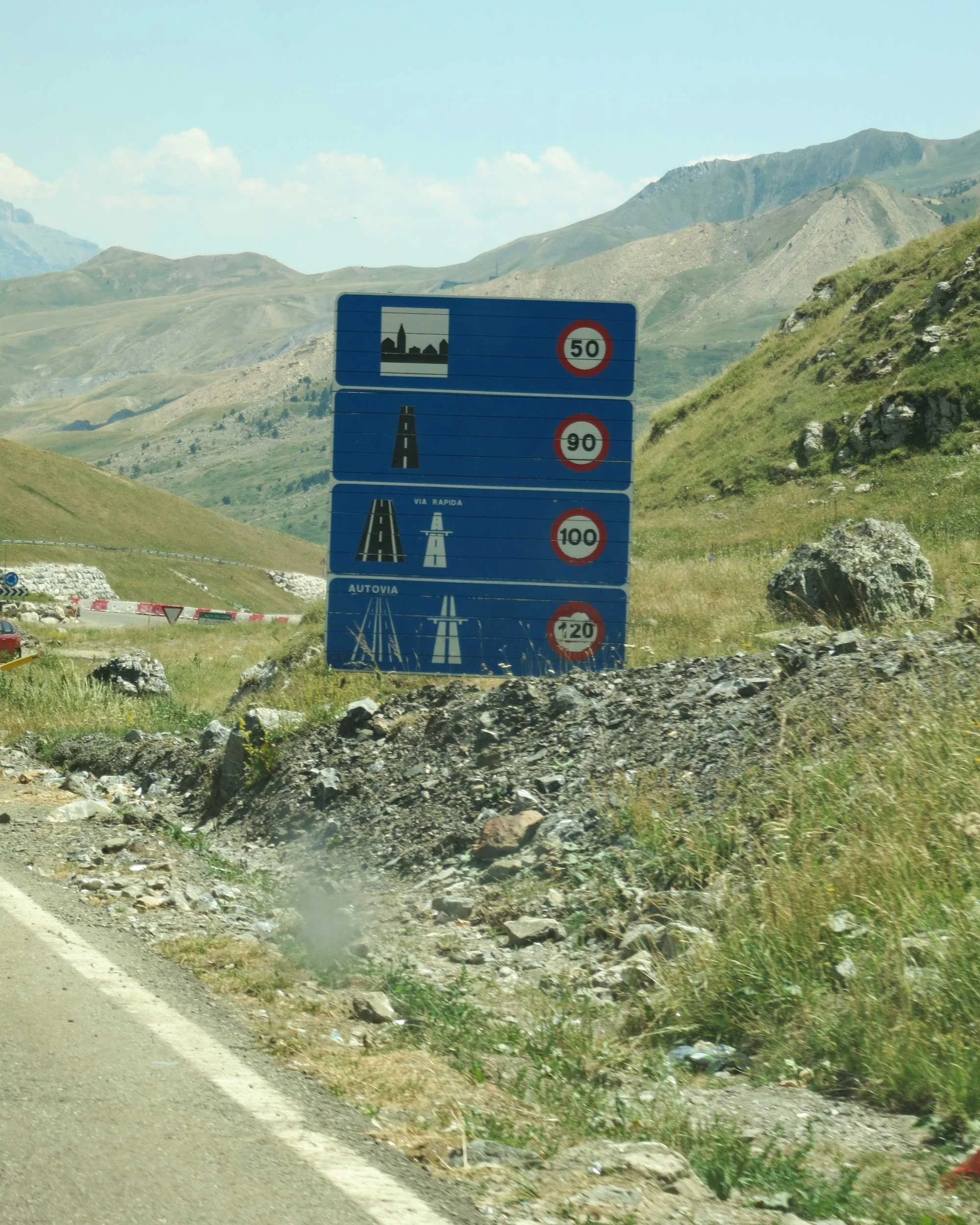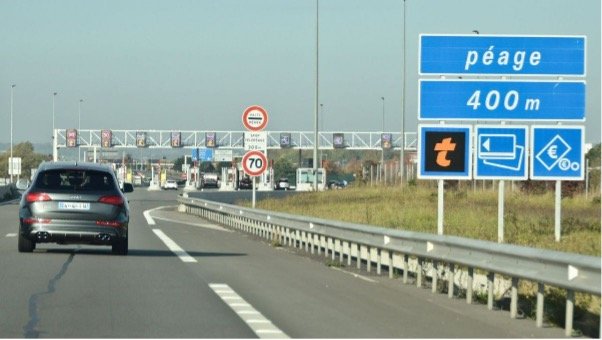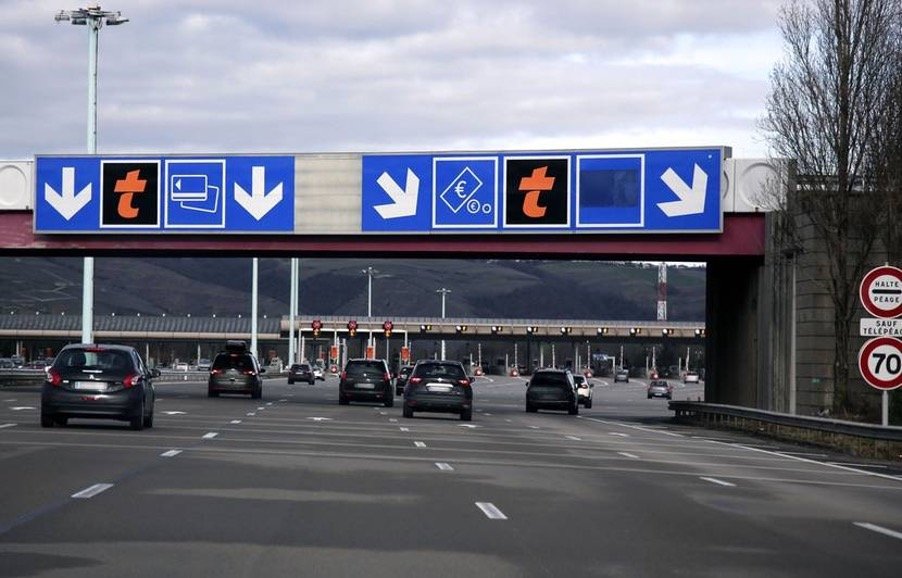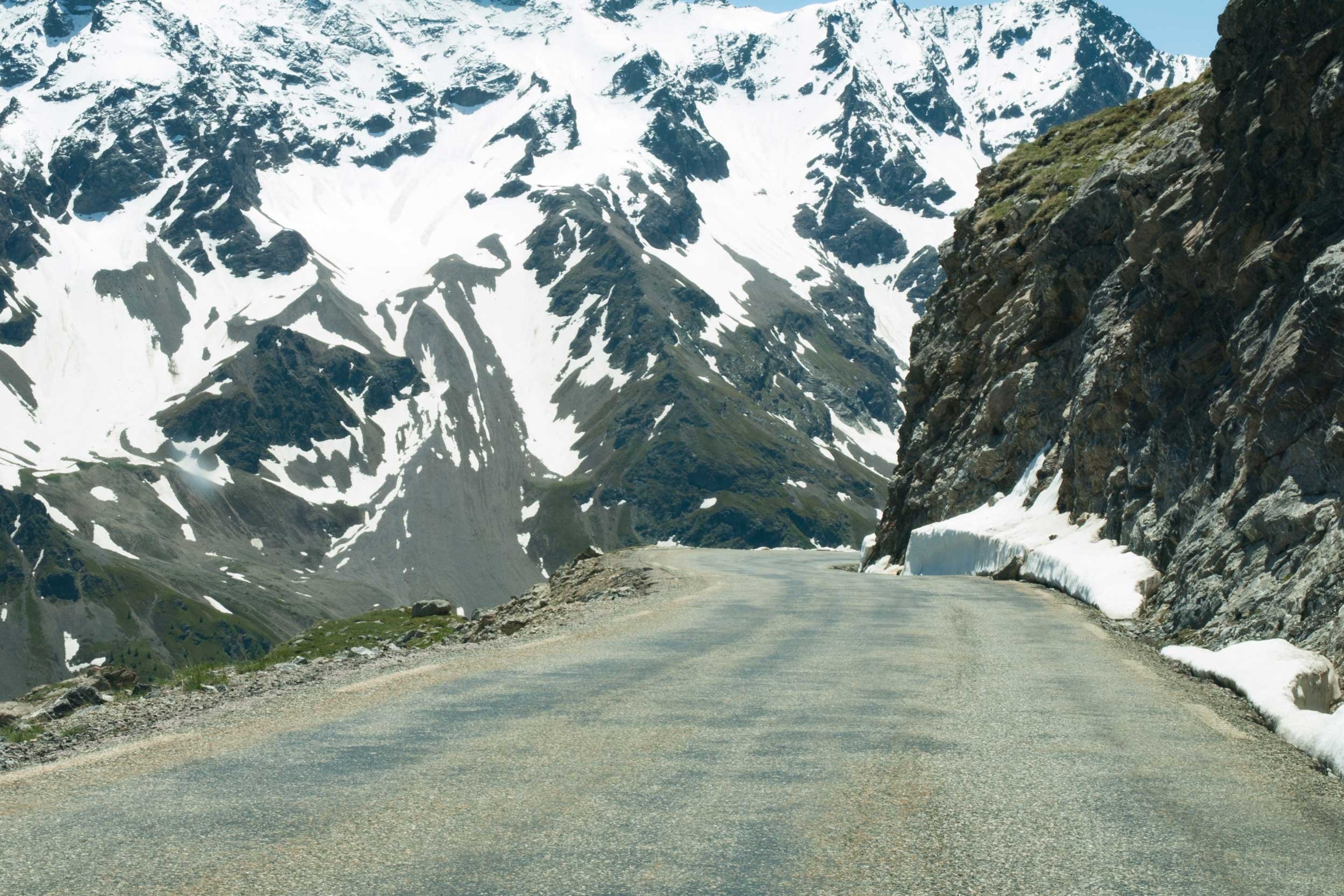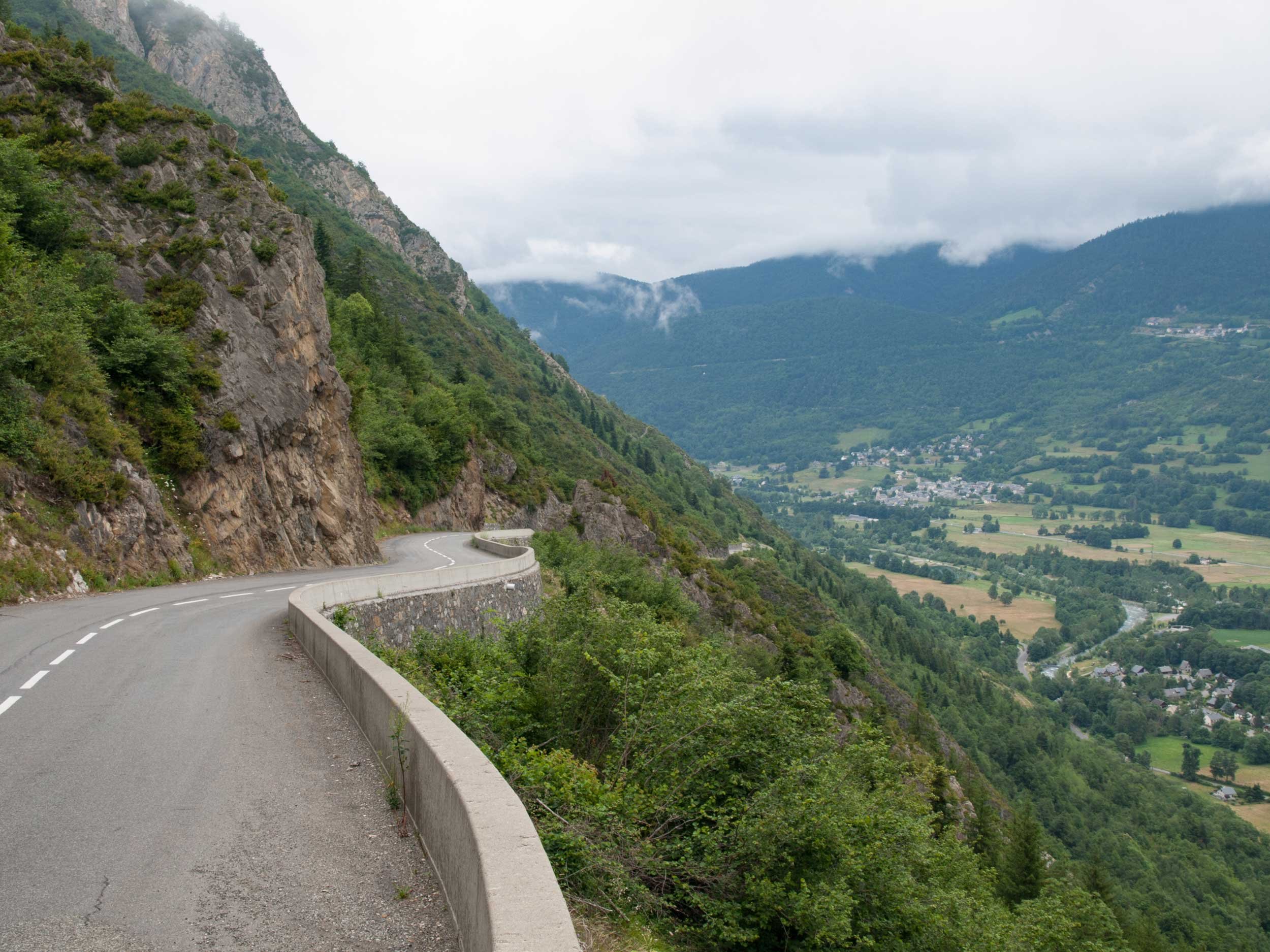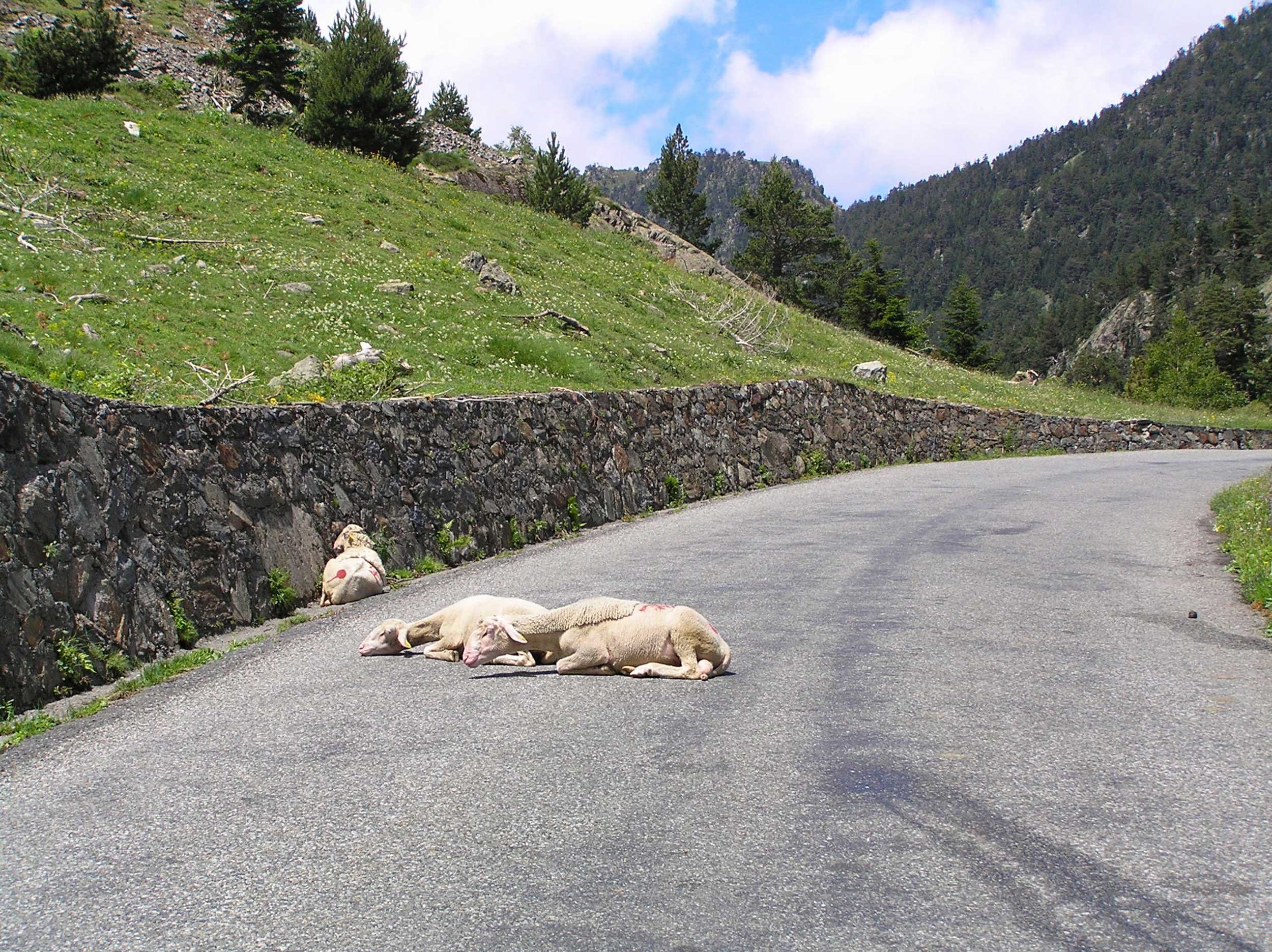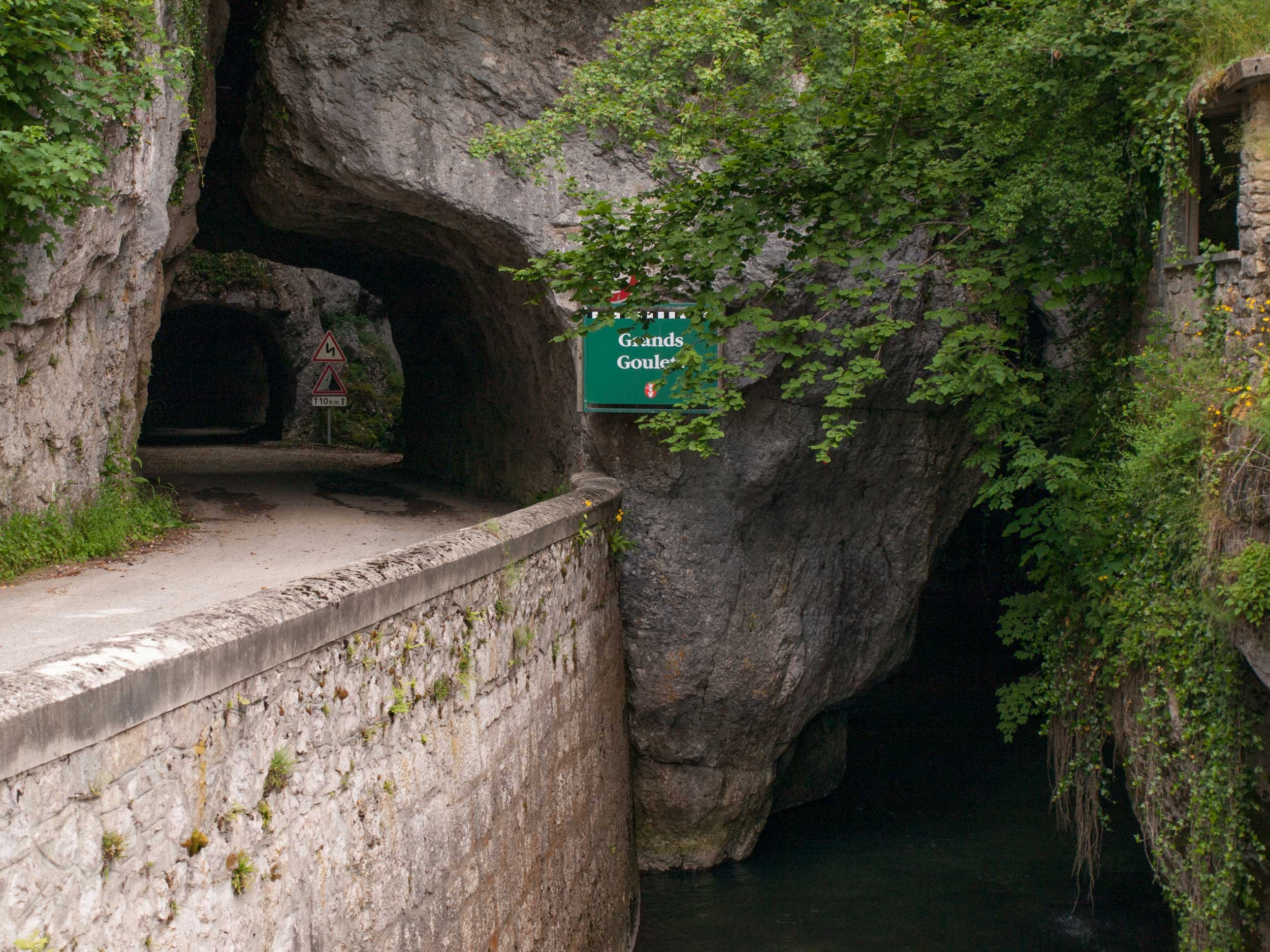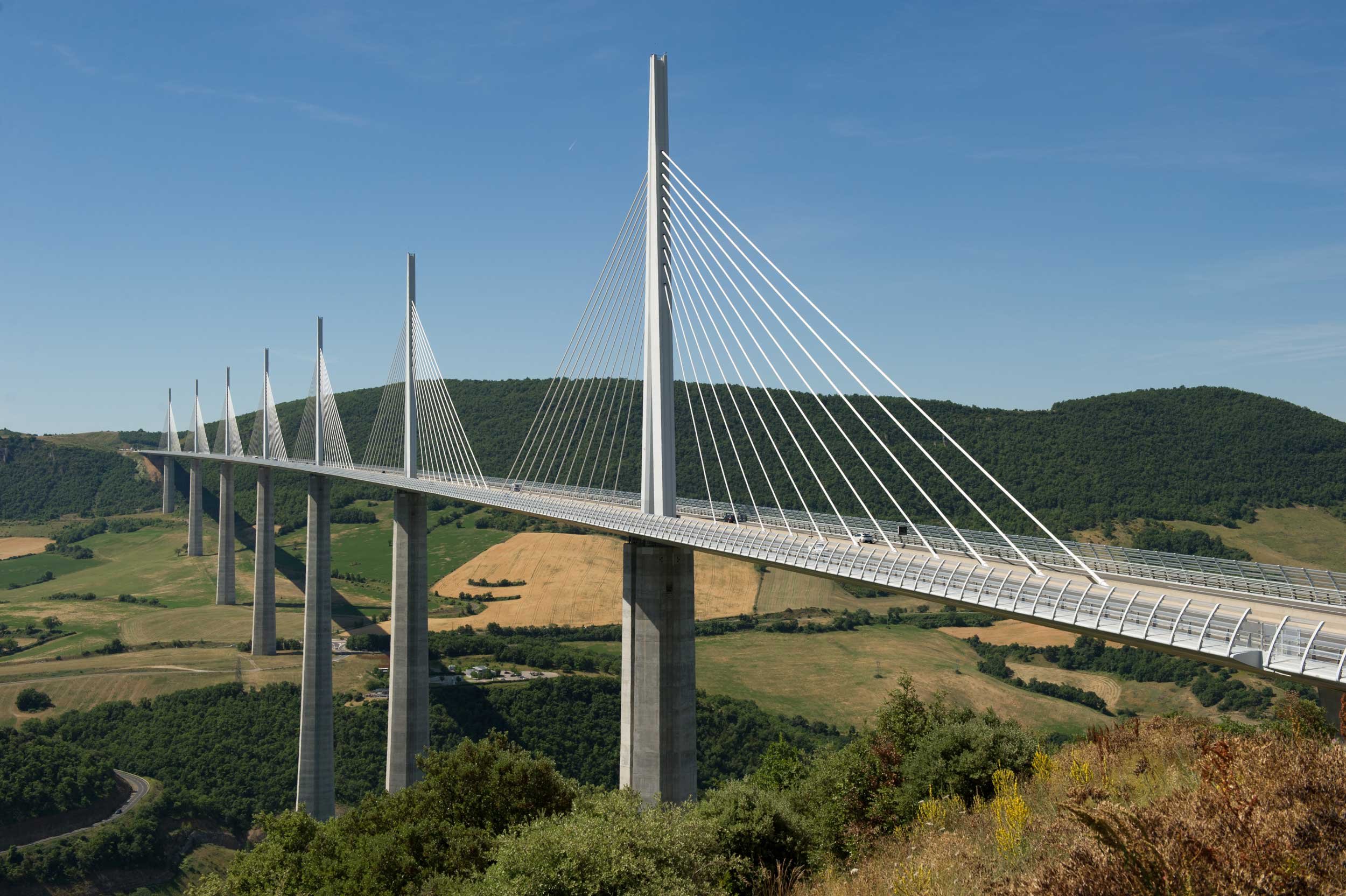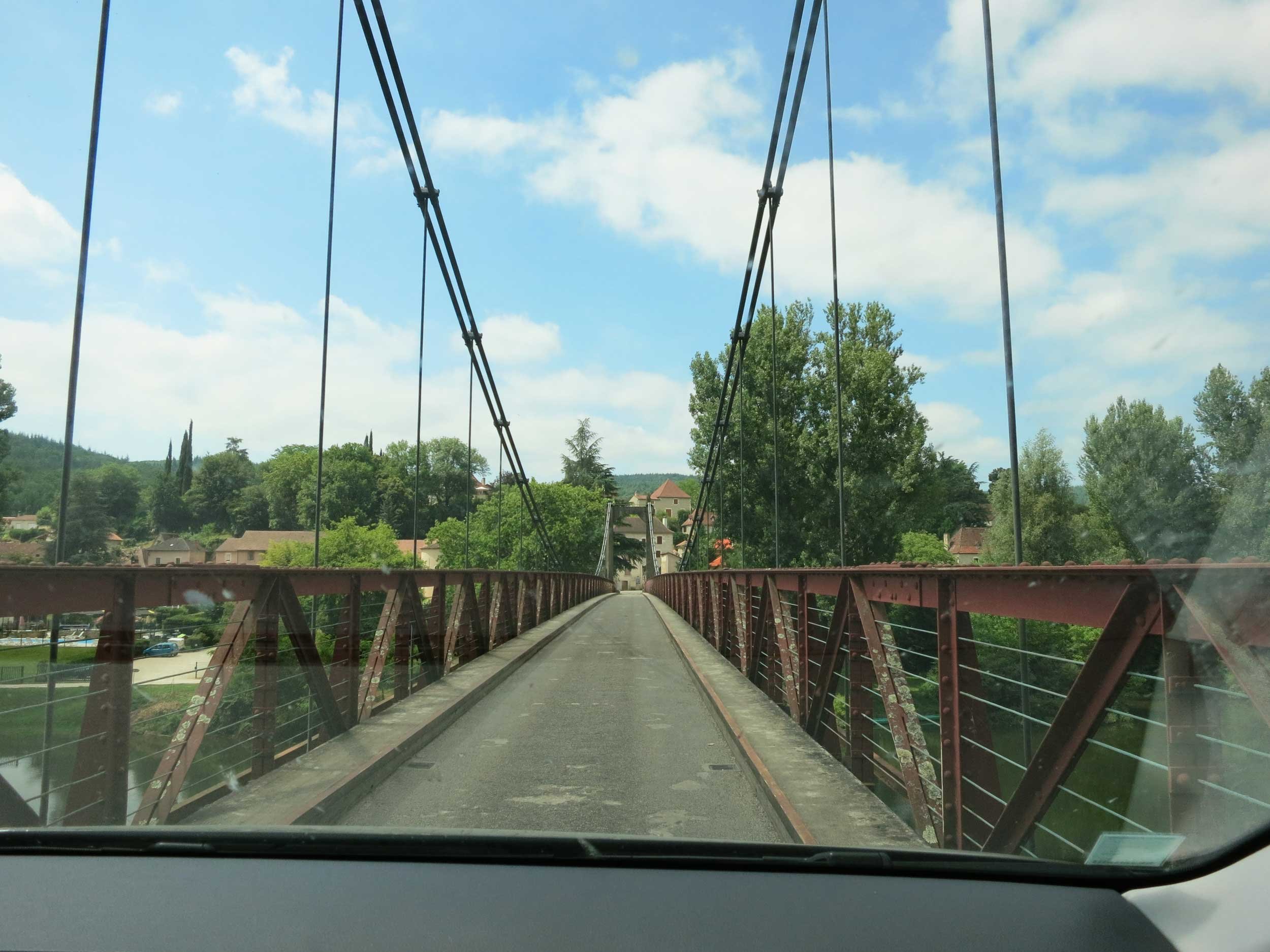Driving in France
Chris will tell you that he loves driving in France. His first experience, driving out of Nice Airport, was quite challenging but that never deterred him. In fact, he loves the ability to drive at 130km on the motorways or conquer the switchbacks of a mountain pass.
Enjoy driving through the mountains on these amazing roads
The autoroutes are fantastic for getting you from A to B quickly and efficiently. Winding your way through narrow country lanes, steep mountain roads and along the coastal routes is perfect. This is the France that we love to explore.
The autoroutes are great from getting you quickly from A to B
Where we live in Australia, there are not as many options to get to your destination, so when we are in France it’s exciting to have the choices. When driving, you have the advantages of stopping when and where you choose. You find yourself at a fork in the road and ask yourself: “Do we take the direct route or the meandering route of discovery? Turn off the motorway and proceed to a nearby village for lunch at a restaurant or a picnic by the river?”
Chris enjoying a picnic by the river
Even if you stay on the motorway, there is an abundance of roadside stops for petrol, lunch or just to pick up a few necessities. This is exciting travel with the freedom to take off at your convenience and have a brand new experience. You might even venture into another country!
Driving through Switzerland, en route to Lake Annecy, there was plenty of signage but be prepared as there is an extra charge to enter Switzerland.
Before choosing your vehicle
Car hire is important to us. Our travels usually include our bicycles and, therefore, we must rent a larger vehicle to fit these plus our luggage. A larger vehicle can be a challenge in French villages where the roads are narrow and space is at a premium. We have learnt to ask lots of questions of our accommodation hosts via email before we commit to an accommodation booking; for example, “Will our vehicle fit through the main gates into the designated parking area of the B & B, or is there a designated parking area nearby in which our larger vehicle will fit?” Below left to right: plenty of room to park and turn around but first you need to cross the narrow bridge, middle photo and finally squeeze through the entrance, final photo.
Here’s our rental van in the parking spot in Saint-Rémy-de-Provence, just steps away from our accommodation, in 2015. The parking spot was not designated to us so, sometimes, it’s ‘first in, best dressed’.
Often, there is no parking available near your accommodation. Your vehicle will need to be parked at some distance away and you must carry/wheel your luggage to your accommodation. This is sometimes an inconvenience but shouldn’t deter you, just keep it in mind.
In Saint-Cyprien, our car parking spot was up this steep pathway and along the road. No set spot so, if you missed out, it was even further to walk.
Rent or Lease?
If you decide that you want to drive in France, there are several options. Rental cars are the most common and only option if you are looking for short term. Usually, the minimum rental period is 3 days, however, plenty of suppliers will allow a rental for as little as 1 day. There are many different companies and loads of pick up/drop off points around the country. One-way fees may apply and will increase the rental cost. If you plan to drive into another country, check the fine print. Our preferred supplier is Auto Europe. We have found them to be the best for customer service, have good rates, allow changes and give refunds. Europcar is our preferred vendor because they have had the best customer service at pick up/drop off. The other option is to lease a car. This option will provide you with a new car and the exact type you order. This includes the car’s transmission and fuel usage. The duration of a lease must be a minimum of 21 days and can be up to 175 days. You will have the flexibility of driving throughout Europe. Renault, Peugeot and Citroën are the companies offering this service.
We have only rented and not leased. When we investigated the lease option for our 8-week trip, it was more cost effective to rent. I read this forum on Trip Advisor. It is 4 years old but highlights some of the main points that customers consider when trying to choose between leasing or renting a vehicle.
Choosing your vehicle
Car rental categories are usually: economy, compact, mid-size, full-size, luxury, SUV/van. The company will give you a suggested vehicle or similar. Use the suggested vehicle and search Google for luggage area dimensions. We have found this to be very useful when you are trying to take a lot of luggage or fit in large items e.g., bicycles etc. It’s important to get this correct as you may be unable to change vehicles at the pick-up location.
A van fits both our bike boxes and suitcases. It even provides a spot for a quick picnic with shelter.
The picture perfect Le Château de la Muzelle in Venosc. There is no way here except by car. Just after we arrived, an avalanche closed the road. It was quickly cleared and life resumed as normal.
Car rental websites give a basic outline of vehicle carrying capacity but, if you are travelling from Australia with more than a ‘weekend away’ type of suitcase, then you can come unstuck should you book the tiniest and cheapest vehicle. Believe me, economy or compact categories are really small. Consider ease of travel and your comfort; for example, a 3-door compact car will be a squeeze even for 2 people each with a large suitcase. A 4-door car will make life a lot less stressful and more rewarding.
Our rental car “Sharon” (VW Sharan) on top of Mont Ventoux where the weather changes in the blink of an eye
Whilst driving in France, you must always carry your home country driver’s licence plus your international driver’s licence. You will need to obtain an International Driver’s licence (link for Australian motorists) from your local motoring association prior to departure.
All of the necessary paperwork for driving in France … passports and International Drivers Licences. Don’t forget your local licence too!
Motorhomes and campervans are other options but I don’t have any first-hand experience with these. I do know that they are extremely popular in Europe and that you will need to book well in advance, particularly if you intend to holiday during their summer months.
C’est moi driving in France
Choosing a pickup/drop off location
The most important suggestion is that you do not pick up your rental car in a large city unless you feel comfortable about driving there. On one occasion, we collected our rental car from Gard du Nord, in the centre of Paris. It was a ‘hair-raising’ experience even for seasoned travellers. We suggest that you choose to pick up from an airport, a smaller city/town or a train station.
If you feel that Paris Charles de Gaulle airport might be challenging to negotiate because it is large, you could consider the smaller Paris Orly Airport as an alternative. However, smaller locations may not have the same variety or number of vehicles from which to choose. Both airports are good options. Airport locations usually might have a higher rental fee but have a greater convenience.
Another consideration is that you may not require a car for the entire holiday. If you are arriving in Paris and plan to spend time in the city then pick up the car when you plan to leave. Any number of transfer possibilities will allow you to pick up at a more convenient location than in the centre of the city. These possibilities include taxi, Uber, privately operated transfer vans, trains and limousines. After spending 5 nights in Paris, we chose to organise a private van transfer from our hotel to Paris Orly Airport, where we collected our rental van and headed to Mont-Saint-Michel. It was far less stressful than our pick up at Gare du Nord on a previous trip.
Paris traffic, admittedly, at 11:30 at night.
At the pick up
Check if your travel insurance covers rental car excess at the time you make your booking. At the pick-up point, the rental company staff may try to convince you that additional cover is required. There is no point in paying this additional fee if the excess is covered by your travel insurance.
Before departing the car rental facility, always check the vehicle for damage thoroughly, inside and out. Ascertain which type of fuel the car requires and how to open the fuel cap. Ensure that there is a spare tyre and necessary tools.
Use your phone or camera to take photos of all panels and don’t delete these until well after you have returned from your trip. If there are any scratches, insist that they are included on the diagram on the vehicle paperwork, even if the attendant is dismissive of them. A different person will be responsible for checking the vehicle at drop-off and may have a different opinion of the degree of damage. Admittedly, we have never had any issues at drop-off in France but our ‘Barcelona story’ was easily settled because we had every scratch documented … a ‘one-off’ experience.
Driving Tips
1. Driving in Europe is always on the right-hand side of the road. Know the basic road rules.
2. We highly recommend using a GPS. This is especially important if there are blocked roads with no detour signs.
3. Don’t panic. Stay focused and calm. Drive slowly and hold your own. Don’t be pushed to drive faster. This is a rare occurrence but could happen when you are less experienced. Usually, there aren’t any issues.
4. If you need to change lanes or merge, most drivers will let you in, rather than cut you off. Our most memorable story is, after a Paris city car pick-up, Chris sailed down the lane past a dozen cars to the red light, only to remember that they drive on the right-hand side of the road and he had gone down the opposing lane. The Parisian drivers let us merge back into the correct lane with, utterly, no issue!
5. Constantly remind yourself to keep right, especially in roundabouts. Once you have been driving for a while, it will become second nature (Chris assures me).
6. In car parks, be aware when reversing, as pedestrians often want to walk directly behind you or near you. Stay alert. This is a game of ‘chicken’ and they will never really endanger themselves.
7. All vehicles in France are supposed to be fitted with a ‘high-viz’ jacket and safety triangle. If you break down, you are supposed to use these items. However, once I realised that this was a requirement, I asked at the rental pick-up and they could not supply these items and simply shrugged.
8. Be aware that not all rental offices will be open 24/7. When you are making your booking, please check the operating hours noting that, if the pick-up office, is in a quieter location, it is likely to be closed for lunch for several hours from 12 noon.
Driving from France into Spain. Each country shows you its speed limits.
Speed Limits
Advice that I have read:
In France, the maximum authorised speed is:
• 50km/h in urban areas
• 80km/h outside urban areas on two-way roads with no central reservation (some sections of some roads may be limited to 90km/h)
• 110km/h on double carriageways with a central reservation (100km/h in wet weather)
• 130km/h on motorways (110km/h in wet weather)
If these limits are not adhered to, drivers can expect an offence notice in the mail.
The remainder of the advice that I read concerned mobile phones, alcohol, drugs and seat belts. The advice was consistent the ‘world over’ so I did not include it. Whilst this is also true for speeding, the temptation is all the greater and, so, worth detailing. Let’s not discuss the wine!
Be careful if you push the limits. You might receive a surprise in the mail after you return home.
GPS
Here’s a little note that I made from a past trip. I’ve previously mentioned that I had planned to write my travel tips many years ago. Sometimes, it’s fun to read what was previously important.
A GPS is a must. Many car rentals do not guarantee one, even if you have booked one. We recommend taking one with you. We purchased ours in 2009, with the sole purpose of taking it on our long European trip. We discussed our usage with the retailer and, after determining that we could purchase maps for overseas to use with it, we deemed it a great investment. The daily rate of hiring a GPS on top of the car rental was a deciding factor for us because it can work out to be very expensive. If you own one, check out if it is possible to purchase maps for Europe and install them. You will be accustomed to the workings of your own GPS and it will have the same familiar voice, even on the other side of the world. A comforting feature when you are navigating your way around Europe. We have a NAVMAN ………… and we named our GPS, Navgirl. She has now safely taken us on two European driving trips. She is patient and understanding, even when we try to override her authority.
Updated note following 2015 trip – there was GPS in our rental car and we were able to choose English. GPS technology has changed and there were many more features on this new one. So, whilst Navgirl came on holidays with us, she never came out of her bag and, upon our return, it was decided that she was past her ‘use by date’.
Since this time, we have trusted that the rental vehicle will have a GPS installed and, of course, smart phones can be used. Although, if there is no signal, this can be daunting. In France, there are so many towns with the same name that you need to have an idea of the department, as well, so that you can drive to the correct place. As a backup, it is still useful to carry maps. You can preplan the route to take and it’s comforting to have an idea of the places that you should be driving to/through en route to the next stop.
Our current perspective:
The car will have a GPS.
The phone will help us determine the accuracy of the car GPS.
Google Maps, on our laptop or phone, over a glass of wine on the previous evening might be an entertaining planning strategy.
No probs, it’ll be fine!
Do you get the idea?!
An old-fashioned map is a useful tool for an overall view and route planning … as was our past view.
Toll/Péage
In France, most of the autoroutes have tolls. A tollgate is called a péage. Some are just a point to collect a ticket (don’t misplace it) and then, further along the route, you will be required to produce that same ticket at the next péage. When approaching the péage, look for symbols that designate the lanes. Do not enter lanes marked with an orange t. These are for vehicles fitted with a Télécharger/electronic tag and it is unlikely that your rental car will have one. The examples in the images, below, are of the typical signage that you will encounter along the autoroute. On the left, when you are approaching a péage. On the right, directing you to the correct lane. At the point of payment, most péages are unmanned. Insert your ticket to the machine and you will be advised of the amount to pay. Your options are cash (notes and coins) or credit cards. We usually choose to pay by credit card and we take a ticket as proof of payment.
If it is really busy, as in the photograph below, stand your ground and do not allow people to push in. The reason that this process takes SOOOO long is because many of the drivers ahead of you will not be organised at all. It’s as if they didn’t realise they were queuing for the péage!. Even if you are extremely organised, be prepared for honking horns (even though you took 1/10 of the time taken by the previous 20 people). Do not be frazzled. It’s all a part of the experience.
A long queue at the péage near Montpellier. Be prepared. Start your travel earlier in the day and avoid weekends if possible.
Driving in France is an enjoyable experience. A car can take you to so many places that you will never see by train or on a small, organised tour. Taking the wrong turn and finding a beautiful vista, driving the ‘more beautiful way’ (to quote one of our B&B hosts), sharing the road with livestock, crossing the the most breathtaking of bridges and scaling high mountain passes are all invaluable experiences. Even traversing an avalanche or being stuck in a progressively narrowing street are all a part of an adventure that you won’t forget. Happy planning and bon voyage.
À bientôt!



